We planned to be in Bangkok just one day so the main highlight of the day was to visit the three most prominent temples.
The oldest and largest temple in Bangkok is Wat Pho (Wat Phra Chetuphon), the Temple of the Reclining Buddha but we did not start there.
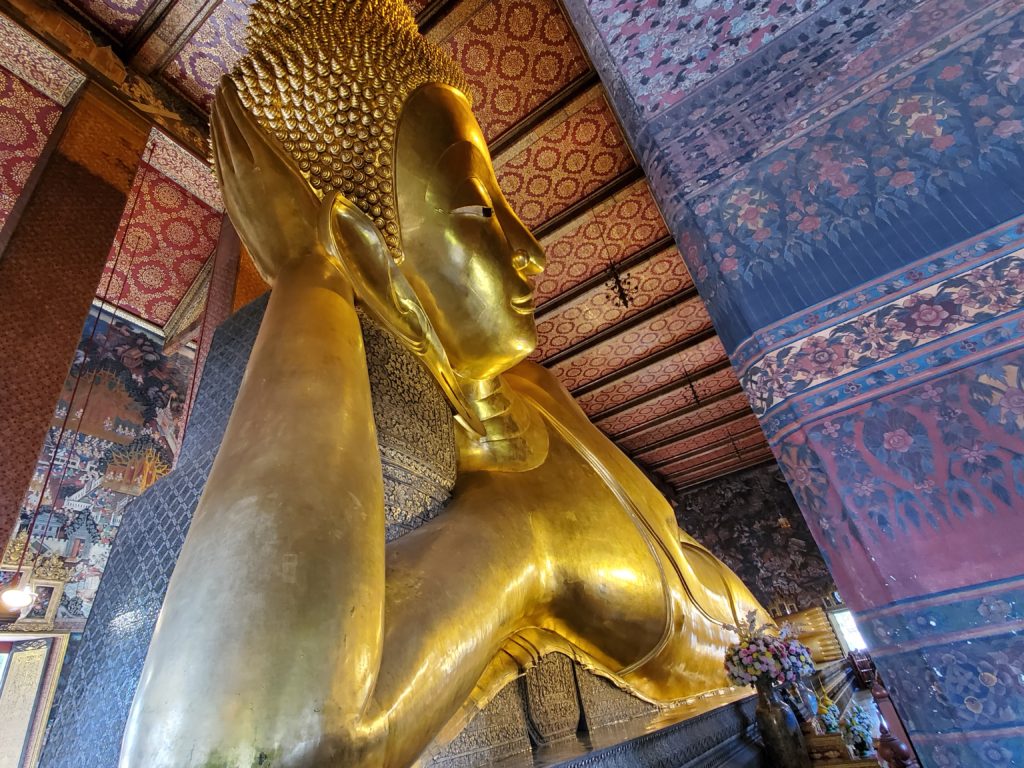
We started at the Grand Palace right when it opened at 8:30 am after already securing our tickets online. If there’s only one must-see sight in Bangkok, this is apparently it.
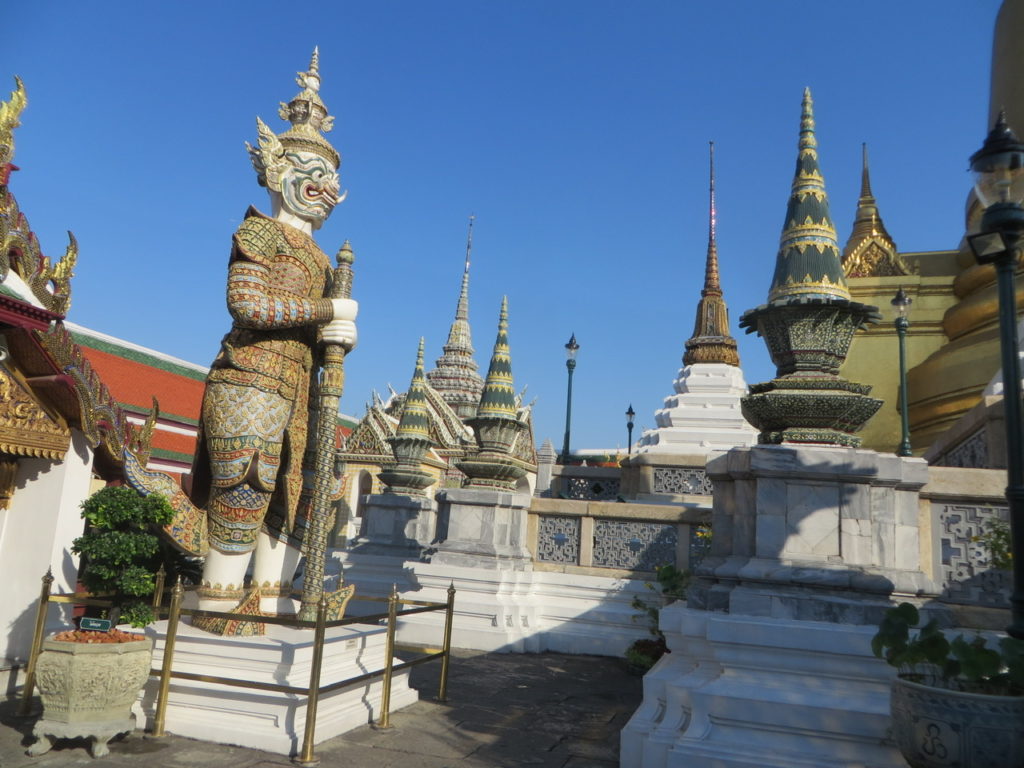
The Grand Palace, a dazzling complex of buildings, has been the official residence of the Kings of Siam since the late 1700s. The architecture is intricate and breath-defyingly beautiful. One of the buildings is Wat Phra Kaew (Temple of the Emerald Buddha) which enshrines Phra Kaew Morakot (a small Emerald Buddha) that dates back to the 14th century.
A strict dress code applies to visiting the Grand Palace especially with the sacred Temple of the Emerald Buddha on its grounds. Visitors must be respectful – no bare shoulders or knees. If you show up disrespectfully dressed, you will be asked to cover up.
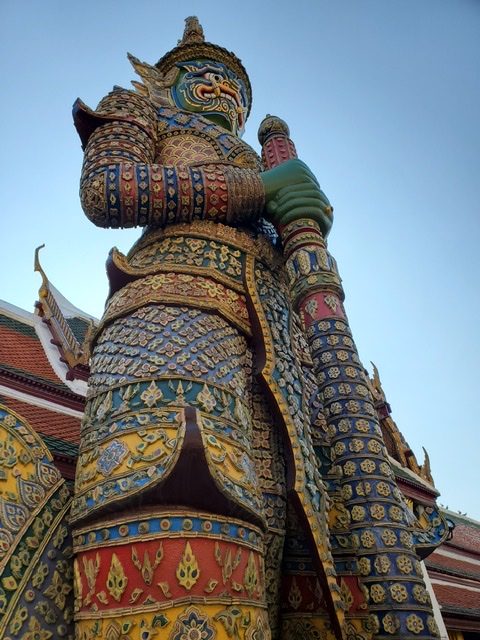

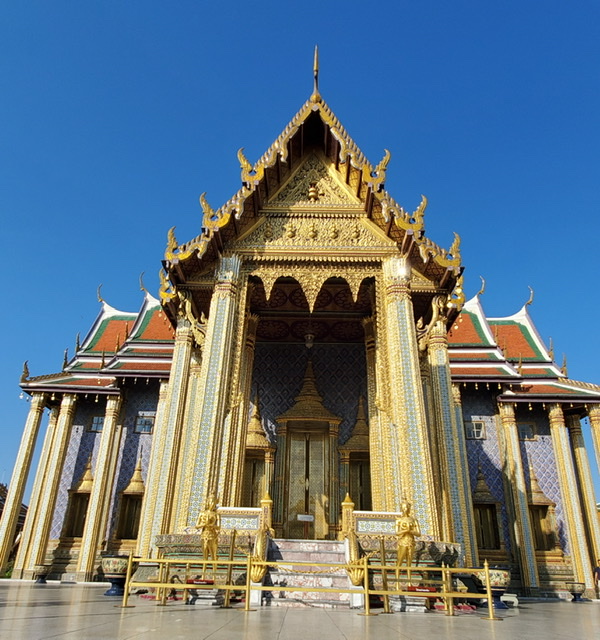
Temple of the Emerald Buddha
We also visited the Queen Sirikit Museum of Textiles before leaving the complex. Here we got a look at various textiles from East and Southeast Asia including batik. We also looked at Her Majesty’s clothing from over the decades. The Queen was influential in turning Thai silk into a key export.
From here we took a tuk-tuk to Wat Pho. It was only about a 10-minute walk away, but the sun was already high up, and I didn’t want to subject Mama to unnecessary walking. She was already getting antsy and it was barely noon. My goodness!
There were several tuk-tuks that came up to us to offer us rides to Wat Pho. I guess they are used to tourists going there next from the Grand Palace. We were given quotes ranging from 100 baht to 200 baht. In the end, I found someone willing to take 30 baht, which was probably still more than necessary. After all, we could have walked.
The Reclining Buddha at Wat Pho is huge! The ‘enlightened one’ spans about 46 meters long and 15 meters tall. The feet alone are 5 meters long and are inscribed with Buddhist Sanskrit symbols. This temple is the birthplace of traditional Thai massage. It is also possibly the earliest centre for medical education. Here, Mama began to feel the adverse effects of one of her medicines and had to take a break. Which means she didn’t really participate at our next stop.
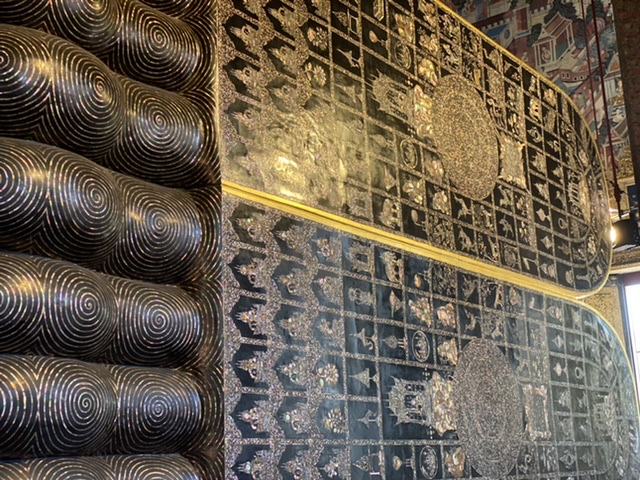
Feet of the Reclining Buddha 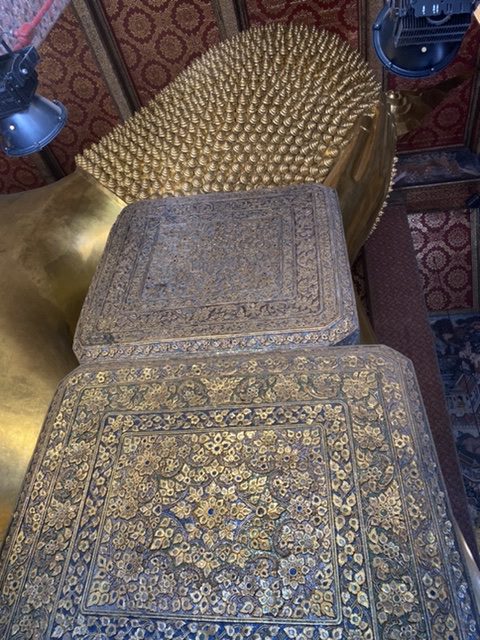
Back of the Reclining Buddha
We took the ferry across the Chao Phraya River to Wat Arun Ratchawararam (Wat Chaeng), the Temple of Dawn. We later saw this Bangkok skyline landmark at sunset and it was so beautiful. Even up close it is stunning. It is decorated with Chinese porcelain and coloured glass.
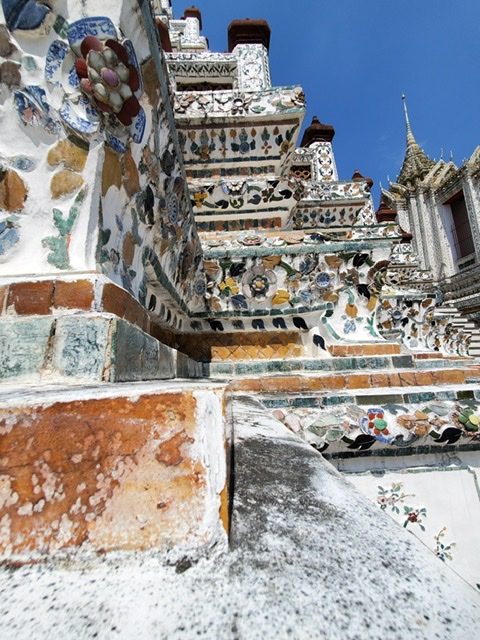
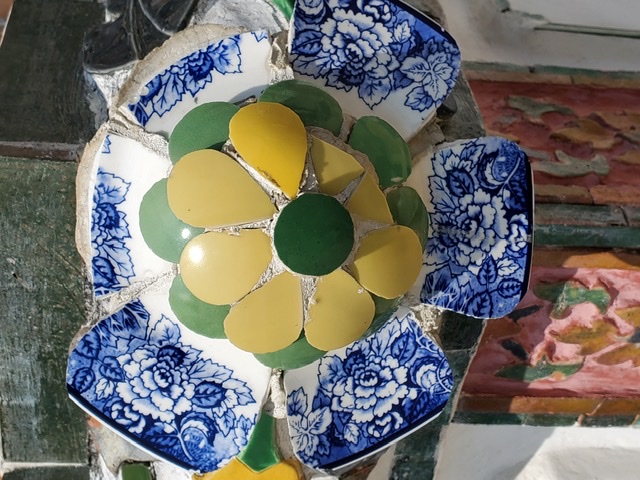
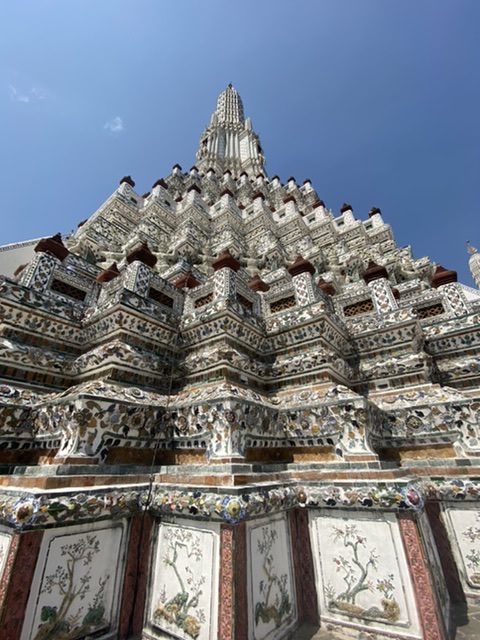
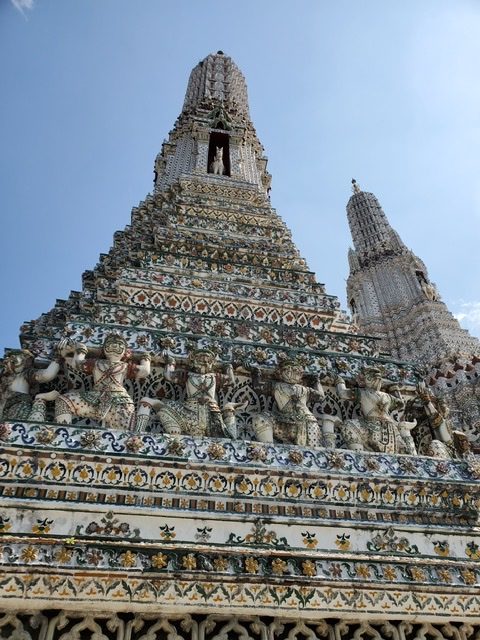
Wat Arun
By now Mama was feeling a little better. We crossed the river again and hailed a tuk-tuk to take us to Phahurat Market (Bangkok’s Little India). Started by a Sikh community, it has been a textile trading centre for over a century. Mama was in search of fabric to eventually sew clothes with on return home. It took a bit to find stores with the quality of fabric she was interested in, getting lost in a maze of streets and street foods of questionable hygiene but after a few temper flares (not saying whose) we had fabric in hand.
On any other day, I would have explored Bangkok’s Chinatown (Yaowarat Road) as well. But one of us was cranky and there was the 2019 coronavirus (2019-NCoV) to contend with. Why go looking for trouble?
As we headed home for nap-time I found myself day-dreaming about travelling solo.


 A lover of mangoes. A woman - smart, without pretense, lefthanded, Afropolitan - navigating this thing called life. An unapologetic believer in social justice and karma. Choosing to radiate positive energy and be true to myself. Here, my musings.
A lover of mangoes. A woman - smart, without pretense, lefthanded, Afropolitan - navigating this thing called life. An unapologetic believer in social justice and karma. Choosing to radiate positive energy and be true to myself. Here, my musings.
I can discern the way architectural design captures the numinous in spaces for you, I believe it takes on a more nuanced and poignant perspective when viewed from an exploratory standpoint different from your own everyday surroundings.Thus the importance of travel assumes a much more “chillaxing” influence.